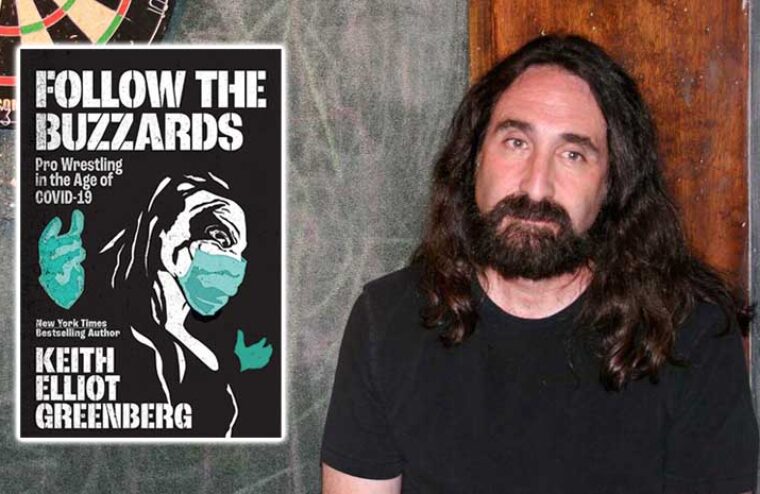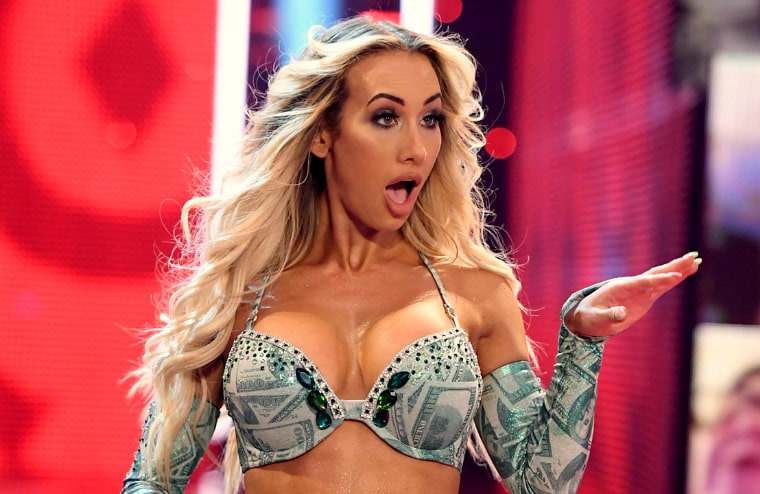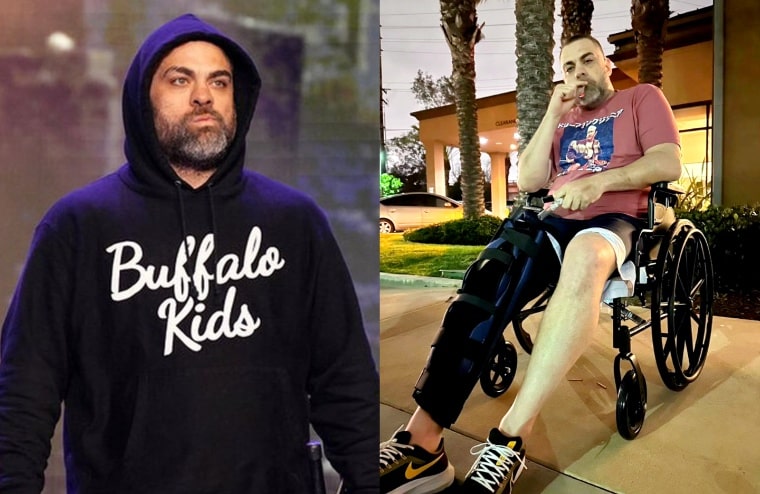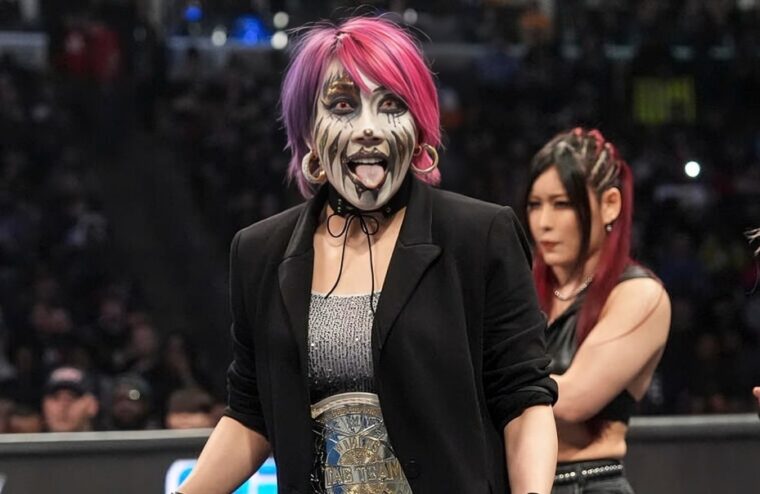At the start of 2020, the professional wrestling business was poised for a major breakthrough. Perhaps never before had there been so many content options for wrestling fans, and upstart promotions around the globe were making their marks as viable alternatives to the long-monopolized business.
Accomplished wrestling scribe Keith Elliot Greenberg — who had previously co-authored the autobiographies of legends like Freddie Blassie, Ric Flair and “Superstar” Billy Graham — had just finished writing his latest tome on the transformation that was taking place in the industry, “Too Sweet: Inside the Indie Wrestling Revolution.”
At the start of that year, All Elite Wrestling was gaining serious traction as the mainstream alternative to World Wrestling Entertainment. The National Wrestling Alliance had emerged as a modern throwback to the days of territory studio wrestling shows. Even minor companies like Absolute Intense Wrestling and Game Changer Wrestling were reaping the benefits of renewed interest in the sport of kings largely sparked by their own hard work, grit and determination to provide wrestling fans with alternative outlets to watch.
Then it all stopped.
Covid-19 took over the world and everything in it. To slow the spread of this potentially deadly virus, socialization was strictly off limits, and the lockdown was no work. Businesses came to a halt, and the wrestling industry was not spared. At least not at first.
“When I had completed that book (“Too Sweet: Inside the Indie Wrestling Revolution”), it culminated with the first ‘AEW Dynamite’ broadcast,” Greenberg said. “At the time, I realized, there has to be a sequel here, because it was about the indie wrestling revolution until the beginning of ‘Dynamite.’” As Greenberg was tidying up re-writes and penning the book’s epilogue, the pandemic exploded, and like everyone else, he had to change course on his next effort. “Follow The Buzzards: Pro Wrestling in the Age of Covid-19,” is Greenberg’s change of plans come to fruition as he chronicles the unprecedented era of wrestling during a global pandemic.
Greenberg highlights the business during a wild two years from the Thunderdome of WWE to indie shows at high school football stadiums. And despite the immense challenges the wrestling industry faced, Greenberg showcases the creative and innovative ways wrestling stayed afloat when just about all else was anchored under water.
Recently, Web Is Jericho caught up with Greenberg to talk all about “Follow The Buzzards” ahead of its early October release.
Set the scene if you would of what exactly the mood was like in the wrestling business when Covid hit. “I think the mood was very much part and parcel with the mood outside of the business. This was one period where you couldn’t run to wrestling to escape. The outside world bored its way into wrestling as evidenced by empty arena matches. You couldn’t ignore Covid when people are wrestling in an arena without any fans in it. I remember one point watching a match with my daughter, and the villain kicked the guard rail. And no one reacted, because there weren’t any fans there. So wrestlers had to learn to improvise. First of all, a lot of them on the indie level were stuck at home. They were even working out at home, because a lot of gyms were closed. Some had access to rings, some didn’t have access to rings. So there were concerns about ring rust. A lot of them were concerned with whether wrestling would ever come back at all. It was a period of uncertainty, and then even in the major promotions like WWE and AEW, it took a while for them to find their footing, but I feel both of them eventually did. WWE with the cinematic match and the Thunderdome. And AEW with re-creating the studio wrestling atmosphere of old by stationing the talent at ringside and letting them get into the matches and creating a legitimate fan vibe at ring side, although a limited one.”
What about on the indie level? “Even on the indie level, there was a lot of innovation that you saw. People with limited budgets were able to make something out of nothing. A fellow in San Diego known as Dirty Ron McDonald, he held drive-in shows. And they were clandestine shows, where he would deliver the information to a secret location via FM transmitter. Warrior Wrestling out of Chicago Heights was staging wrestling at a high school football field so they could socially distance people into pods. GCW had a number of shows during the daytime at a park in Indiana. I asked the promoter, ‘Why daytime?’ He said, ‘So I can save money on lighting.’ Fans showed up to these events. Some at the GCW show in particular had driven from several states over. There were even shows in Texas I covered where fans came from the Northeast. So there was this hunger for wrestling. Wrestling in North America was one of the vital entertainment forms that you could essentially lose yourself in every week. As a wrestling fan you learn to suspend your disbelieve. Well, we had to learn to ignore the fact that the buildings were virtually empty.”
Once AEW and WWE got going, it became such a reprieve, because at least there was something to look forward to every week. At the time, all sports had stopped, too. There really was nothing new happening anywhere except in the wrestling ring. With that being said, what did wrestling mean to you during the pandemic? “I’m a third-generation, lifetime wrestling fan. So wrestling has always been a sanctuary, and it continued to be just in a different way than it had been before, because we were all living through the pandemic. I was filled with an admiration for the talent, because these were the people who were really risking their health and were very uncertain. And rather than holing up in their homes, they came to satisfy the need in themselves to entertain and to fill a void in fans lives, which they did in my opinion quite successfully.”
How did wrestling get away with being able to run when everything else couldn’t? “Well, you’ll have to ask (Florida governor) Ron DeSantis about that (laughs). On the indie level, the promoters obviously had to improvise quite a bit, because they had to deal with restrictions. Some indie promoters just shut down, because they couldn’t hold matches indoors. They had to have everybody tested. It was just too expensive and too much of a bureaucratic morass to navigate. Others found a way to do it safely. At the time we didn’t even know how to gauge Covid. So there’d be one of the wrestlers backstage taking other people’s temperatures. We kinda knew you could have asymptomatic Covid, but at least there was efforts being taken. There were stations where people could sanitize their hands. But we really didn’t know.”
A couple promotions in particular had a lot of momentum going for them, and it was really unfortunate when the pandemic happened. Specifically AEW and NWA come to mind. “I was just thinking NWA. It’s so funny you said that. I just received the printed copy of my book a couple days ago, and in between everything else I’m doing, I’ll open up a random page and just read what I wrote and hope that it still holds up. I was just reading about the NWA, and I remember when they were doing their studio type wrestling before the pandemic, how exciting that was. I definitely think all those months off, it slowed their momentum significantly. I don’t want to bury them, because I’m rooting for them, and they’ve been putting on shows. My friends who are big NWA fans are really satisfied with the product. But yes, the potential was there for them to be even bigger. They had to cancel the Crockett Cup. AEW has gone pretty far. To be in Arthur Ashe Stadium with 20,000 people, I wouldn’t say this is a group that had it’s momentum slowed too much. NWA was building up and building up, and they pretty much had to go back to the beginning and reacquaint fans with their product. But what keeps people watching? Compelling matches and compelling storylines. And the NWA has that.”
What were the positives of the Thunderdome? And conversely, what were some of the drawbacks? “The positives far outweighs the mishaps. The mishaps really occurred before the Thunderdome. At one point when you would watch NXT or WWE, there would be Performance Center trainees standing in a dark Performance Center behind plexiglass, and it wasn’t quite working. It didn’t feel like the spectacle that WWE has always been. The Thunderdome solved a lot of those problems as best you could during the pandemic. You could recreate the fan feel. It was easy to forget that there were no fans in the building. You could hear the fans cheering. I remember thinking at the time that the Thunderdome was so cool, because we were used to not just watching wrestling with no fans but watching baseball and football with no fans. I remember thinking, there’s probably gonna be some aspect of the Thunderdome still around when fans are admitted into arenas again. But now that you can have the live fan experience, why would you have remote fans? But who knows? Maybe there will be a need for it somewhere.”
What were some of the positives that came out of this era? Did any wrestlers come about better? “It’s all about the storylines. Whether it’s this period or any other period. Roman Reigns left for a while, but he certainly came out of this period more compelling than he’d ever been, because he could finally express his true personality. Fans booed him when he was supposed to be a good guy. As soon as he began showing this edge, which I believe is part of his true self, even the fans who were supposed to boo him, can’t stop watching. Now when fans scream ‘Roman sucks,’ they scream it because that’s the reaction he’s trying to get. They don’t feel that he’s this forced squeaky clean good guy. We saw an evolution of Roman Reigns and the evolution of The Usos along with it, which has been one of the most intriguing things in WWE. At the same time, you have the emergence of talent like Darby Allin. You have Thunder Rosa being introduced to an international audience. You had the elevation of Dr. Britt Baker D.M.D. Those are all people who maybe weren’t that well known before the pandemic began. By that exposure on AEW and the right push, they’ve risen to be the elite of the industry. We haven’t even began to talk about MJF.”
He was so entertaining during this entire period, especially in a lot of those first AEW shows where he was watching from ringside.. He’s been nothing but red hot ever since. “Whatever you think about his sabbatical from the sport of kings, certainly he has people paying lot of attention to him now.”
What’s your take on the recent events in AEW concerning CM Punk and The Elite? “I watched all that with my neighbor. There’s a great wrestling bar in Brooklyn called DDT which I highly recommend. It’s a pro wrestling themed bar, but it’s small. So if there’s a pay-per-view there, you have to get there early to get a seat. My neighbor and I went to DDT to watch ‘All Out.’ We took an Uber back, and we were having this chat about the matches, and we were pretty excited about it. And then we realized that was piggybacked on a weekend where we saw a great WWE card in ‘Clash at the Castle’ and a really solid NXT show. It was like the culmination of a great wrestling weekend. Then I go to sleep, and I wake up, and I’ve got a dozen messages from people I know in the UK who were up earlier than me. They were just like, ‘CM Punk! Tony Khan!’ It was almost like they were incoherently babbling about this. So I said, ‘Alright, I’ll watch this. I turn on the press conference, and I thought, ‘Oh big deal. He said stuff about Colt Cabana.’ And then it just keeps going and going and going. I’m looking at CM Punk and looking at Tony Khan’s face, and now I’m riveted. I don’t know if it’s good for the business or bad for the business. But their ratings have been up. Sometimes adversity brings strength.”
“It’s kind of funny, because when MJF cut his promo in Los Angeles on Tony Khan, a lot of people were complaining, ‘Oh, look at that. He diminished Wardlow’s first match as a babyface.’ Then when this whole scrum happened, you heard people say, ‘Oh, you diminished MJF’s first time back (in months).’ But you know what? MJF is doing fine and so is Wardlow. So I think sometimes as the saying goes, controversy breeds cash.”
To order “Follow The Buzzards: Pro Wrestling in the Age of Covid-19,” visit ECW Press. Follow Keith Elliot Greenberg on Twitter: @keithegreenbeeg.
- Eddie Vedder Goes Off On Kansas City Chiefs Kicker - May 20, 2024
- WWE Was Prepared For Ric Flair To Die - May 20, 2024
- Kid Rock Allegedly Waves Gun In Face Of Reporter - May 20, 2024




